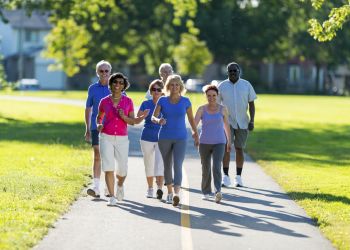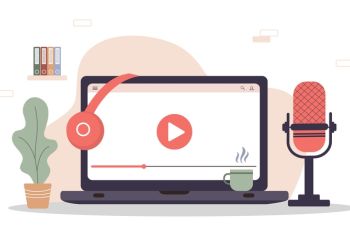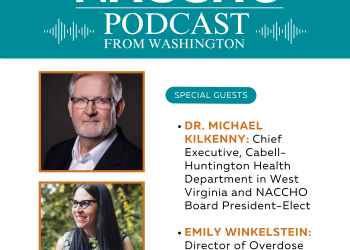By TraciAnn Hoglind, NACCHO Health and Disability Fellow
 Visualize this: You are at the hospital for a medical procedure. The doctor comes in, snaps the gloves on, and speaks to you. You don’t hear a thing. The doctor is ready to start the procedure, and you are unable to communicate. The doctor is now examining your body. At that moment, you don’t have a say in your health care.
Visualize this: You are at the hospital for a medical procedure. The doctor comes in, snaps the gloves on, and speaks to you. You don’t hear a thing. The doctor is ready to start the procedure, and you are unable to communicate. The doctor is now examining your body. At that moment, you don’t have a say in your health care.
This is what hundreds of thousands of deaf people experience, even while having a heart attack or giving birth.[1]
Hospitals and healthcare providers are required by the Americans with Disabilities Act (ADA) to provide interpreters and other effective accommodations that allow them to communicate with deaf patients, as well as deaf individuals accompanying hearing patients. When deaf patients request accommodations, such as an on-site American Sign Language (ASL) interpreter, they are often given alternative and futile options. Paper-and-pen writing is not a qualified method for clear and concise communication, especially if a deaf patient is on medications or in a dire health situation; even so, this is a common occurrence.
Video remote interpreting (VRI) is another common and ineffective method hospitals choose to provide rather than on-site interpreters. Time and time again, people have filed complaints, sued hospitals, and released articles about how incompetent VRIs are. VRIs have accessibility limitations for clear and thorough communication compared to on-site interpreters. Examples include the inability to view the video interpreter due to vision limitations, limited head and body mobility, physical obstacles, and the inability to communicate because of technical difficulties.
Without giving deaf patients their requested accommodation method, their autonomy in being active participants in their own health care is taken away. Deaf people need to be able to efficiently communicate in their first and native language like all patients should be able to do.
Moreover, intersectionality often comes into play with the diverse deaf community. Deaf people who also identify as people of color, LGTBQIA+, have other disabilities, and are immigrants may experience worse situations and health outcomes. For example, accessibility concerns are more serious for deaf pregnant women and their children. In studies comparing deaf and hearing women, deaf women were found to have less prenatal care, less information from their doctors, and more risk for preterm birth and low birth weight. Generally, African American women are at a much higher risk for adverse birth outcomes, so being deaf as well only increases those risks. Even with the ADA in place, health inequity and audism (discrimination against deaf individuals) put the deaf community at a higher risk for adverse health outcomes.
One reason why healthcare is not accessible to deaf people is that the ADA regulation about communicating with deaf people in hospital settings is written in equivocal language, using words like “should,” “may,” and “prefer.” One of the last sentences of the regulation is an opt-out clause: “A hospital need not provide communication aids or services if doing so would fundamentally alter the nature of the goods or services offered or would result in an undue burden.” An updated regulation about effective communication in Title II and III entities shows some improvement in wording, but the “undue burden” opt-out clause still exists.
Rather than enforcing equal communication access for deaf people, the ADA has given the healthcare industry a loophole. Unfortunately, the healthcare industry has taken advantage of this loophole far too often, and there are currently efforts at the federal level to further weaken the ADA.
Local health departments can intervene by working with the deaf community to identify inaccessibility issues and take action to make improvements. Local health departments should also work with hospitals in their respective counties to educate them about working with patients with disabilities and help them understand the importance and benefits of providing accessibility, no matter the cost. Partnerships with deaf state commissions, deaf state associations, and state departments of health should be established to provide cultural and sensitivity training and to monitor and enforce hospitals’ and health services’ compliance of the law.
True equity for Americans with disabilities can only be achieved if the community comes together to create change.
Quick links to deaf commissions and associations:
- National Association of the Deaf
- List of Deaf State Associations
- List of Deaf State Commissions and Organizations
- National Association of State Agencies of the Deaf and Hard of Hearing
_________________________
- The term ‘deaf’ used in this article also includes people who identify as deaf, deafblind, deafdisabled, hard of hearing, and late deafened.




